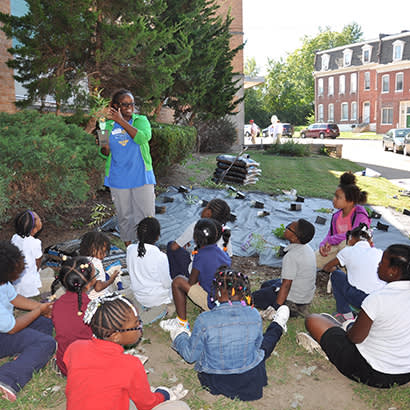
For an enhanced digital experience, read this story in the ezine.
Does where you live impact your ability to access nature? Should it? Research has shown providing connections between people and nature often translates to beneficial outcomes, like improved health and well-being.
A national nonprofit organization, The Trust For Public Land (TPL), conducts an annual ParkScore assessment to evaluate how well residents of the 100 largest U.S. cities can access green space, parks and trails (green space) within a 10-minute walk of their home. I’m proud of the efforts taken in St. Louis that have resulted in nearly 98 percent of our residents having access to green space, especially when the national average is merely 55 percent.
Through intentional efforts, cities can determine priorities for creating new natural areas if the desired result is to provide more equitable access. TPL offers tools that can help urban planners apply an equity lens in this effort. With tools like these and the American Forests Tree Equity Score, cities are better able to target activities so that people of color and low-income communities can more readily access green spaces.
Ensuring there is equitable access to nature appears to be a priority for many cities as they strive to improve the quality of life for their residents, including those who are most at risk or in need. Some cities are specifically attempting to redress the legacies of historic practices now understood as systemic racism, such as redlining. Tree-planting efforts, gardening programs and park additions can all help make it easier for urban dwellers to connect with nature on a regular basis. Purposefully utilizing green-space enhancements to benefit underserved populations living in urban areas experiencing blight, neglect or vacancy is an investment in both the social fabric and natural infrastructure of a city.
The Opportunity and Imperative of Urban Natural Resources
Cities can offer much more than access to nature, or even equitable access to nature. Is it enough to replace a city parking lot with a lawn of fescue in an underserved part of the city? It might be sufficient to improve a city’s ParkScore rating, but it misses the opportunity to be a rich and nature-full experience that exposes residents to native plants and animals. Urban biodiversity is an important opportunity to bolster a city’s ecological integrity and vibrancy.
Urban green spaces — whether in public spaces or private areas — often serve as important urban refugia for wildlife. These spaces also can serve ecological functions, such as stormwater mitigation and carbon sequestration. What’s more, people can benefit from proximity to biodiversity, such as opportunities for increased eco-literacy and awe when they notice a bird or flower. Working with partners, such as universities and conservation agencies, cities can provide green spaces teaming with purpose and benefits for people and creatures alike. The key is to be intentional in space planning, program design and delivery, so that those special connections between people and nature can be enjoyed at schools, churches and gathering spots — especially in challenged neighborhoods.
With Intentionality, Urban Conservation Practices Can Benefit People and Nature
Conservation partners in St. Louis have been working to improve equitable access to high-quality nature through urban monarch butterfly gardening, tree planting to mitigate urban heat island effects impacting vulnerable populations, as well as by converting vacant land to green space that neighborhood residents have voiced as their preferred use. Green spaces rich in native species are more likely to attract birds and butterflies that will, in turn, delight and inspire residents. Doesn’t everyone deserve to have access to high-quality, biodiverse green spaces?
Beyond enhancements to physical spaces, cities also can center equity in efforts that result in improved eco-literacy through programming. The key is to be both race-conscious and species-conscious in natural resource design and decision making.
Catherine L. Werner is Sustainability Director for the City of St. Louis, Missouri.

